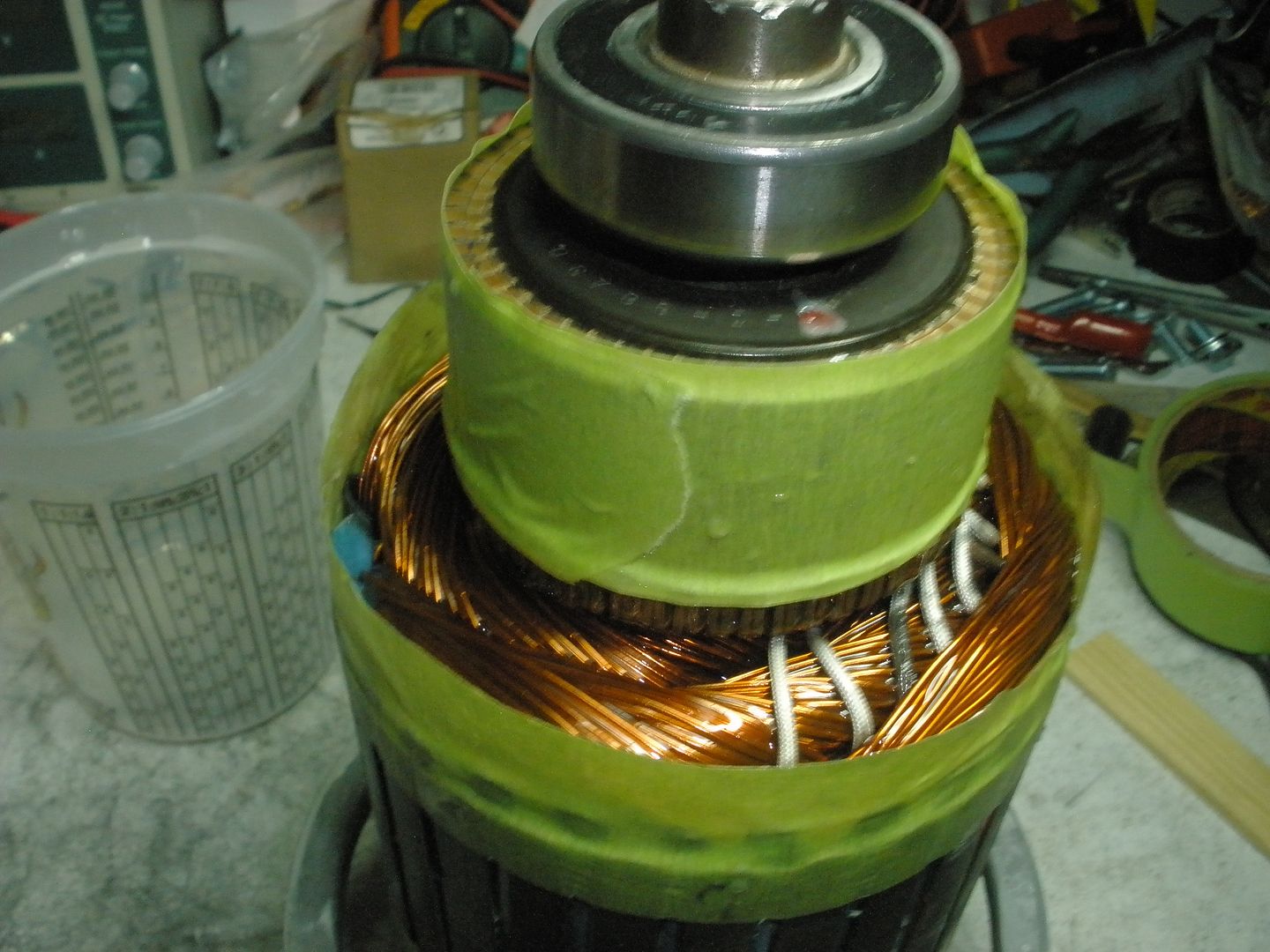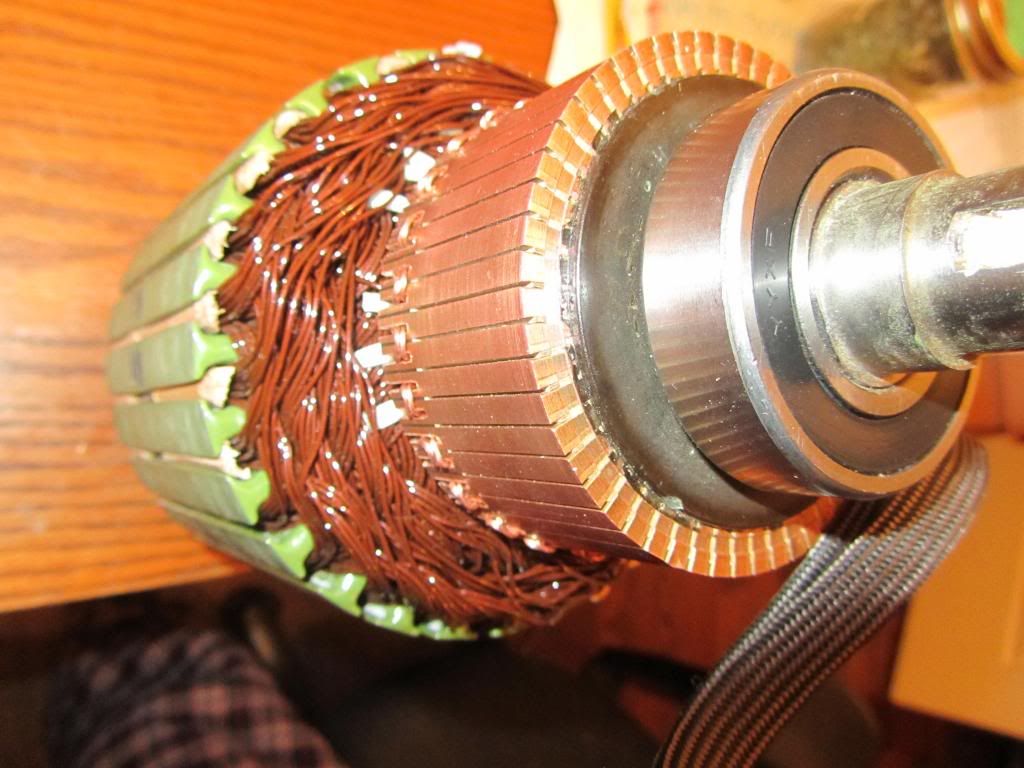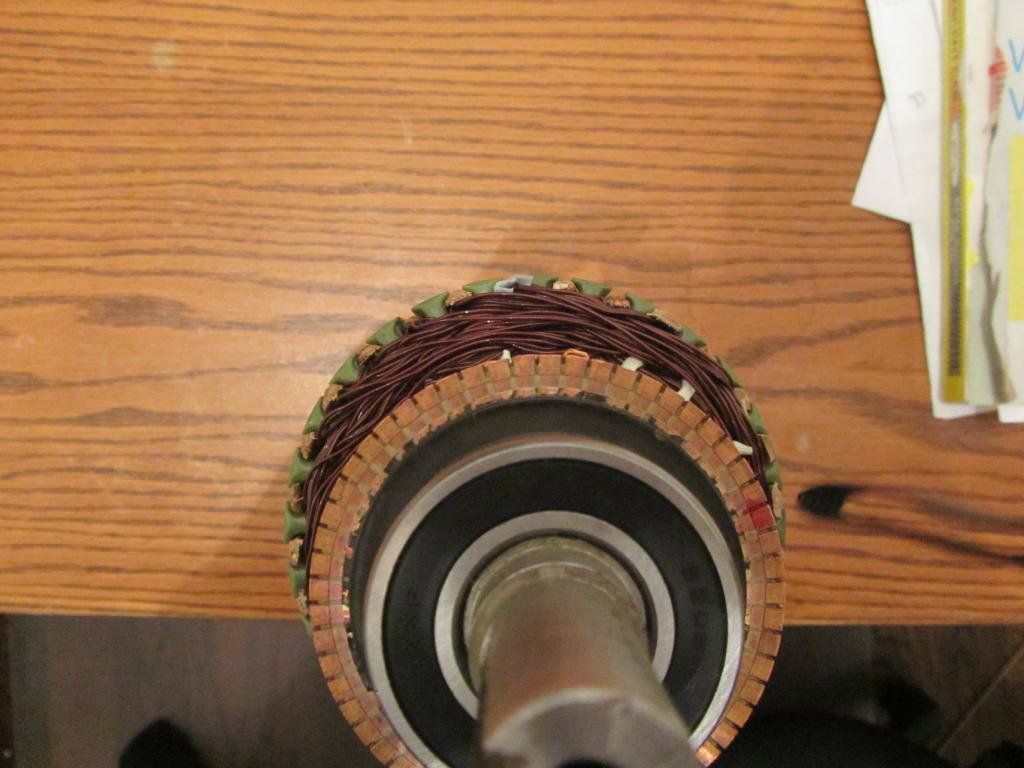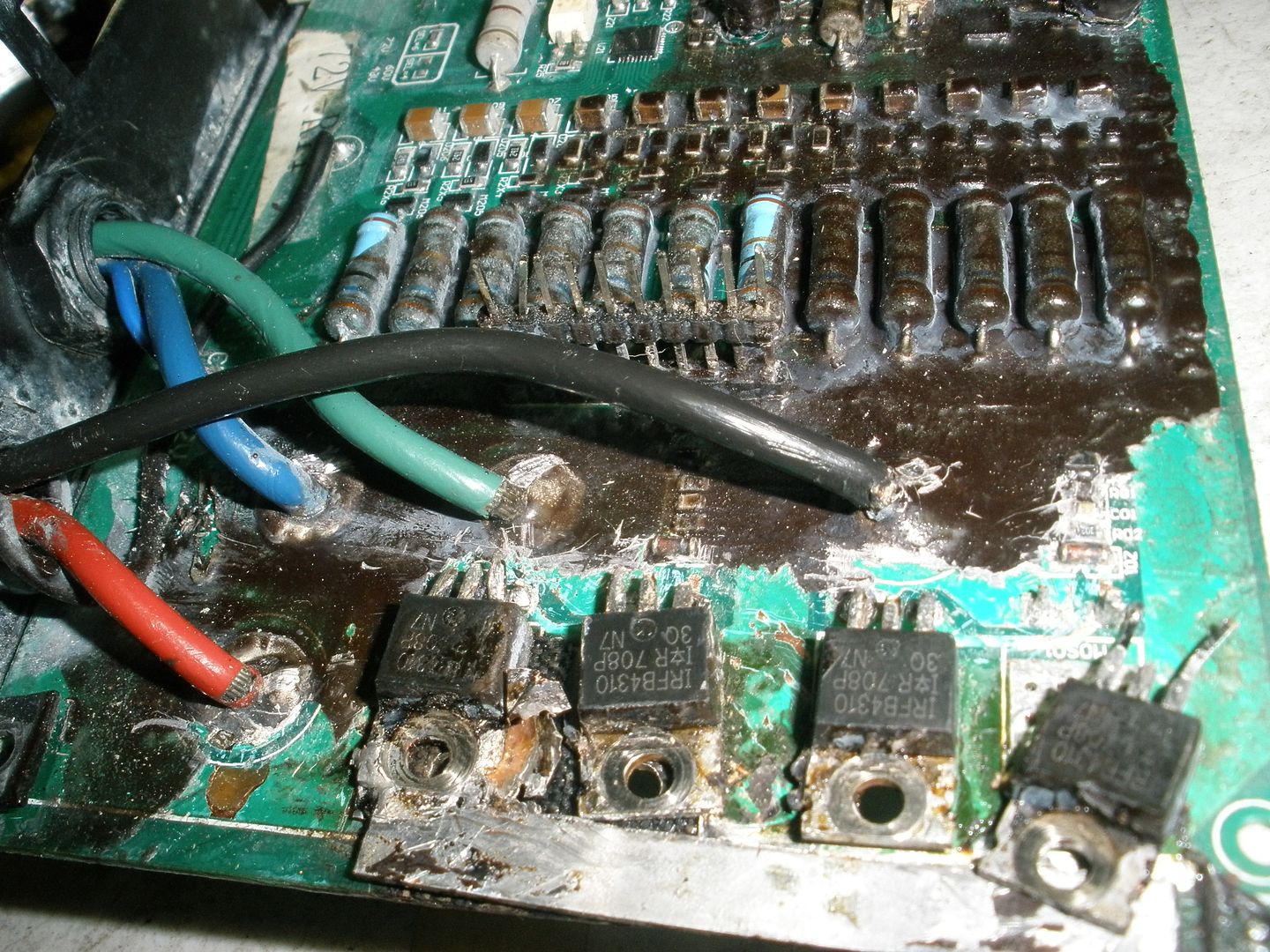Repaired P27-P28...Epoxy Coated now...
Hello to All,
Here is Rotor after repaired two broken windings...P27 and P28...
And now all coils are Epoxied Coated...no more accidents, "no más"...
Note how I masked Commutators and core...still it leaked through...but great, because it got into the hedges slots...so now they are secure.
[IMG] [/IMG]
[/IMG]
[IMG] [/IMG]
[/IMG]
I used EPO230 made by Elantas...nice and rigid coat...but expensiveee!!...$65.00 a Pound...Class F will hold up to 155ºC=311ºF...Coils will never get there...
Now the "Space Ball" is a Solid One...
Have to take another weight measurement...see how much fatter it got..
Regards to all
Ufopolitics

Hello to All,
Here is Rotor after repaired two broken windings...P27 and P28...
And now all coils are Epoxied Coated...no more accidents, "no más"...
Note how I masked Commutators and core...still it leaked through...but great, because it got into the hedges slots...so now they are secure.
[IMG]
 [/IMG]
[/IMG][IMG]
 [/IMG]
[/IMG]I used EPO230 made by Elantas...nice and rigid coat...but expensiveee!!...$65.00 a Pound...Class F will hold up to 155ºC=311ºF...Coils will never get there...

Now the "Space Ball" is a Solid One...

Have to take another weight measurement...see how much fatter it got..

Regards to all
Ufopolitics

 You can see the plastic poles in the body holes which indicate my brush placement. I think it is in accordance with neutral timing on this diagram:
You can see the plastic poles in the body holes which indicate my brush placement. I think it is in accordance with neutral timing on this diagram:




 [/IMG]
[/IMG]
Comment